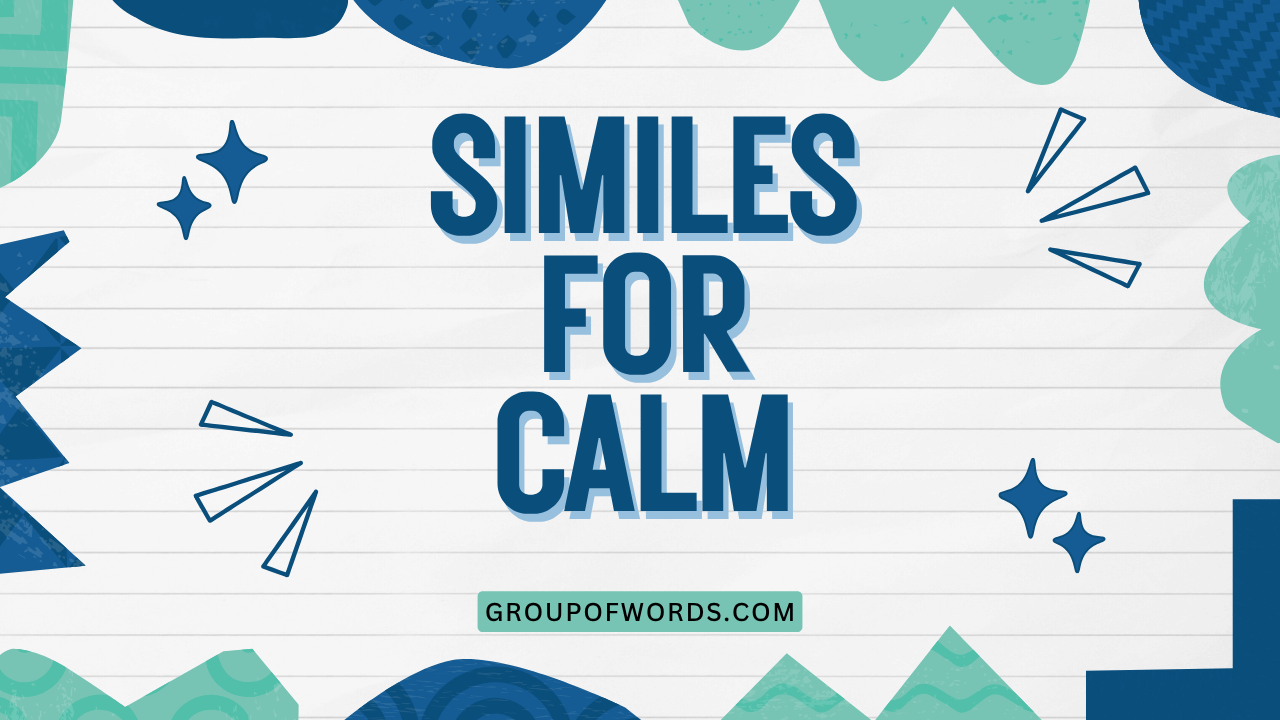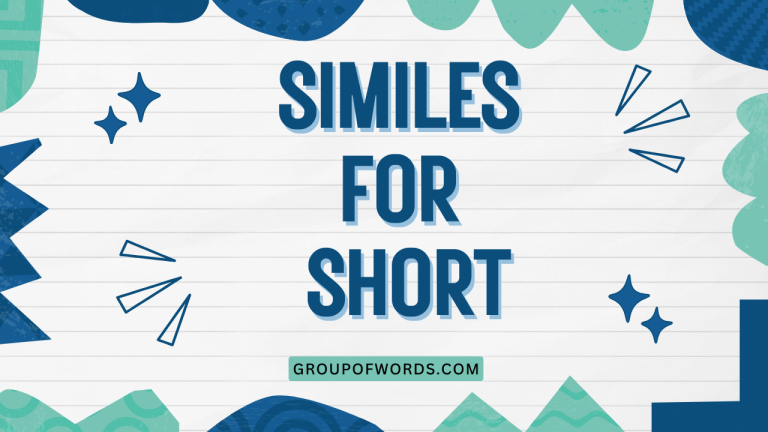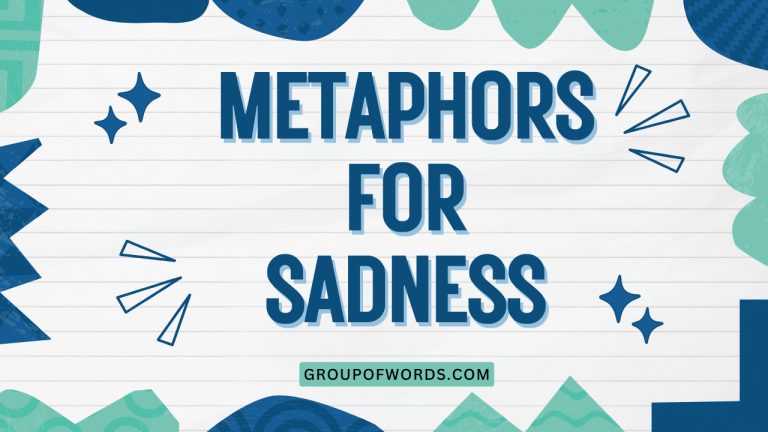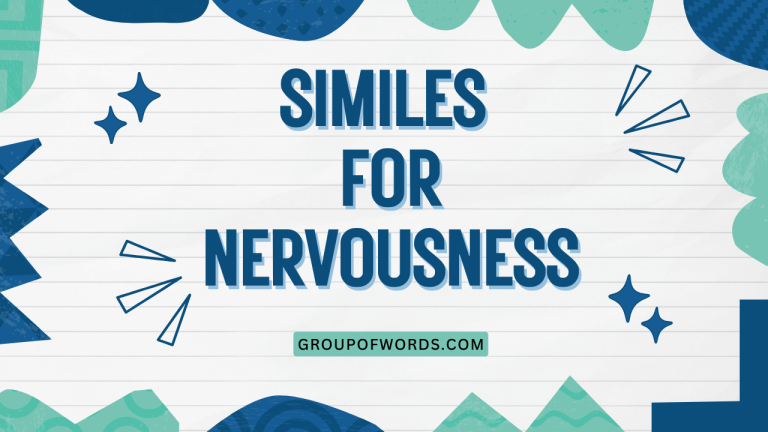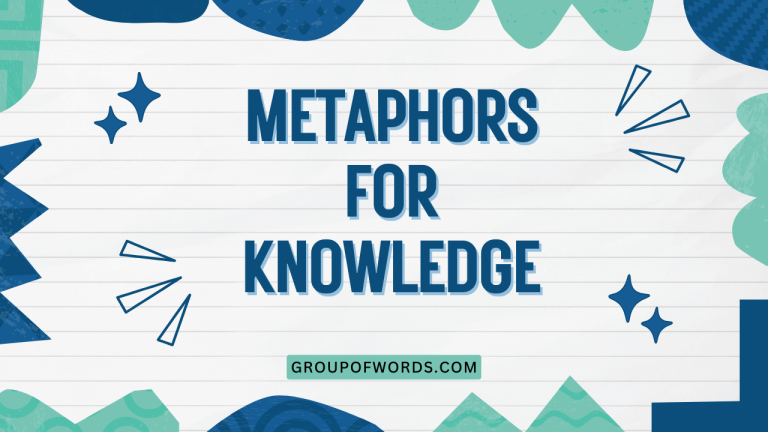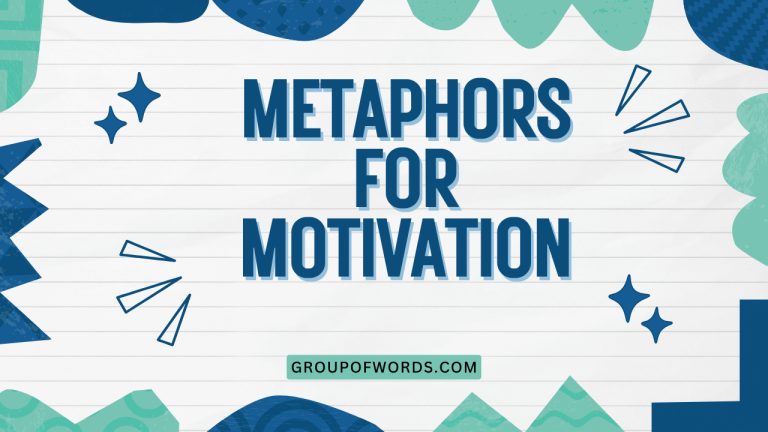Similes for Calm: Mastering Figurative Language
Understanding similes is crucial for enhancing both your comprehension and expression in English. This article focuses specifically on similes that evoke a sense of calm, equipping you with the tools to describe tranquility and peace effectively.
Whether you’re a student, writer, or language enthusiast, mastering these similes will elevate your ability to paint vivid pictures with words and convey nuanced emotions. This guide provides definitions, examples, usage rules, and practice exercises to ensure a comprehensive understanding of this essential figurative language technique.
By the end of this article, you will be able to identify, interpret, and use similes for calm with confidence, adding depth and richness to your writing and communication. The examples and exercises are designed to cater to different learning styles and proficiency levels, making it accessible for anyone eager to improve their English language skills.
Table of Contents
- Definition of Similes for Calm
- Structural Breakdown of Similes
- Types of Calmness Expressed by Similes
- Examples of Similes for Calm
- Usage Rules for Similes
- Common Mistakes with Similes
- Practice Exercises
- Advanced Topics in Similes
- Frequently Asked Questions
- Conclusion
Definition of Similes for Calm
A simile is a figure of speech that compares two unlike things using the words “like” or “as.” Similes for calm specifically aim to describe a state of peace, tranquility, or serenity by likening it to something else known for its calmness. The effectiveness of a simile lies in its ability to create a vivid image or sensation in the reader’s mind, allowing them to better understand and connect with the feeling of calmness being described.
The function of similes for calm extends beyond mere description. They can also evoke emotions, set a specific tone, and add depth to writing.
By drawing parallels between calmness and other concepts, similes enhance the reader’s sensory experience and understanding of the subject matter. In essence, these similes are powerful tools for creating evocative and impactful prose.
In various contexts, similes for calm can be used in literature, poetry, everyday conversation, and even in professional settings to convey a sense of composure or stability. For example, a doctor might describe a patient’s heartbeat as “steady as a rock” to reassure them.
Similarly, a writer might describe a character’s demeanor as “calm like a still lake” to portray their inner peace. The versatility of similes for calm makes them an indispensable part of effective communication.
Structural Breakdown of Similes
The basic structure of a simile consists of three main components: the subject, the linking word (either “like” or “as”), and the referent. The subject is the thing being described, the linking word establishes the comparison, and the referent is the thing to which the subject is being compared.
Understanding this structure is essential for creating and interpreting similes effectively.
Let’s break down each component with examples:
- Subject: The thing being described as calm (e.g., “her voice,” “the sea”).
- Linking Word: “Like” or “as” (e.g., “like,” “as”).
- Referent: The thing that embodies calmness (e.g., “a gentle breeze,” “a sleeping baby”).
Putting it together, a simile for calm might look like this: “Her voice was as soothing as a gentle breeze.” Here, “her voice” is the subject, “as” is the linking word, and “a gentle breeze” is the referent. The simile effectively conveys the calmness of her voice by comparing it to the gentle and calming nature of a breeze.
The order can sometimes be reversed for stylistic effect, although this is less common. For instance, instead of “He was as calm as a monk,” one could say, “As calm as a monk, he remained.” However, the standard Subject-Linking Word-Referent structure is generally preferred for its clarity and directness.
Types of Calmness Expressed by Similes
Calmness is not a monolithic concept; it can manifest in various forms. Similes for calm can reflect these different nuances, allowing for a more precise and evocative description.
Here are some types of calmness that similes can express:
- Serenity: A deep and profound sense of peace and tranquility. Example: “Her face was as serene as a sleeping angel.”
- Composure: A state of being calm, self-controlled, and unflappable, especially in a stressful situation. Example: “He remained as composed as a seasoned diplomat.”
- Tranquility: A state of quiet and peacefulness. Example: “The garden was as tranquil as a hidden sanctuary.”
- Stillness: A state of being motionless and silent. Example: “The lake was as still as a mirror.”
- Gentleness: A state of being mild, kind, and tender. Example: “Her touch was as gentle as a feather.”
By understanding these different types of calmness, you can choose similes that more accurately reflect the specific nuance you wish to convey. For instance, using “serene” implies a deeper level of peace than simply “calm,” while “composed” suggests a controlled calmness even in the face of adversity.
Examples of Similes for Calm
The best way to understand and master similes for calm is to explore a wide range of examples. Below are several tables organized by category, each containing numerous similes to illustrate different aspects of calmness.
These examples will help you expand your vocabulary and develop a deeper understanding of how similes can be used effectively.
Nature-Based Similes
Nature is a rich source of imagery for conveying calmness. The following similes draw on natural elements to evoke feelings of peace and tranquility.
The table below illustrates similes that use nature as a reference for describing calmness. Each simile aims to connect the feeling of calm with elements found in the natural world, such as forests, meadows, and mountains.
| Simile | Explanation |
|---|---|
| As calm as a sleeping forest | Evokes the quiet and undisturbed nature of a forest at rest. |
| Like a serene meadow in the morning | Suggests the peacefulness of a meadow bathed in morning light. |
| As tranquil as a mountain lake | Implies the undisturbed stillness of a lake high in the mountains. |
| Like a gentle breeze through the trees | Conveys a sense of soothing and subtle movement. |
| As peaceful as a sunset over the ocean | Captures the beauty and tranquility of a sunset at sea. |
| Like the quiet rustling of leaves | Suggests a soft, natural sound that promotes relaxation. |
| As still as a frozen pond | Implies complete lack of movement and undisturbed peace. |
| Like a field of wildflowers swaying gently | Conveys a sense of natural beauty and gentle motion. |
| As serene as a starry night sky | Evokes the vastness and peace of a clear night sky. |
| Like a quiet forest after a snowfall | Suggests the hushed and pristine nature of a snow-covered forest. |
| As calm as a sleeping volcano | Implies a powerful, yet dormant, potential for disruption, currently at peace. |
| Like a quiet desert landscape at dawn | Conveys the stillness and beauty of a desert landscape at the start of the day. |
| As tranquil as a hidden glen | Suggests the secluded and peaceful nature of a small, sheltered valley. |
| Like the distant call of a lone bird | Implies a sense of solitude and natural harmony. |
| As peaceful as a mountain peak shrouded in mist | Captures the ethereal and serene quality of a misty mountaintop. |
| Like a butterfly resting on a flower | Conveys a sense of delicate stillness and natural beauty. |
| As still as the eye of a hurricane | Implies a center of perfect calm amidst surrounding chaos. |
| Like a field of lavender in bloom | Suggests the calming fragrance and visual beauty of a lavender field. |
| As serene as a quiet woodland path | Evokes the peaceful and secluded nature of a forest trail. |
| Like the gentle patter of rain on a roof | Conveys a soothing and comforting sound. |
| As calm as a hibernating bear | Suggests a deep and undisturbed state of rest. |
| Like a spider web glistening with morning dew | Implies delicate beauty and undisturbed stillness. |
| As tranquil as a valley filled with fog | Captures the mysterious and peaceful atmosphere of a foggy valley. |
Water-Related Similes
Water, in its various forms, is often associated with calmness. These similes use water imagery to describe states of tranquility and peace.
The table below features similes that use water as a metaphor for calmness. From still lakes to gentle streams, these examples illustrate how water imagery can effectively convey a sense of peace and serenity.
| Simile | Explanation |
|---|---|
| As calm as a still lake | Implies a surface undisturbed by wind or current, reflecting perfect peace. |
| Like a gentle stream flowing through the woods | Conveys a sense of peaceful movement and natural harmony. |
| As tranquil as a calm sea at dawn | Captures the serene beauty of the ocean at the start of the day. |
| Like the smooth surface of a quiet pond | Suggests a lack of disturbance and a sense of reflection. |
| As peaceful as a slow-moving river | Implies a steady and unhurried flow of life. |
| Like the gentle lapping of waves on the shore | Conveys a soothing and rhythmic sound. |
| As clear as a mountain spring | Suggests purity and undisturbed clarity. |
| Like a dewdrop clinging to a leaf | Conveys a sense of delicate stillness. |
| As serene as a quiet cove | Evokes a sense of seclusion and protection from the outside world. |
| Like a fog rolling in over the water | Suggests a soft and enveloping peace. |
| As calm as a deep ocean trench | Implies a profound and undisturbed quiet. |
| Like the gentle flow of a waterfall | Conveys a sense of continuous, yet peaceful, movement. |
| As tranquil as a quiet lagoon | Suggests a sheltered and peaceful body of water. |
| Like the soft mist rising from a lake | Conveys a sense of ethereal beauty and tranquility. |
| As peaceful as a silent underwater world | Implies a world undisturbed by surface noise and activity. |
| Like the gentle ebb and flow of the tide | Conveys a sense of natural rhythm and balance. |
| As clear as crystal-clear water | Suggests purity and transparency. |
| Like a ripple spreading across a pond | Conveys a sense of subtle and gentle movement. |
| As serene as a calm harbor | Evokes a sense of safety and tranquility. |
| Like the gentle sway of seaweed in the ocean | Conveys a sense of natural, flowing movement. |
| As calm as a glass of water before sleep | Suggests a simple, pure, and peaceful state of being. |
| Like the slow melting of ice on a warm day | Conveys a gentle, unhurried transition. |
| As tranquil as a pond reflecting the moon | Captures a serene image of reflected light and quiet beauty. |
Sound-Related Similes
Certain sounds can evoke a sense of calmness. These similes use auditory imagery to describe states of peace and tranquility.
The table below presents similes that use sound as a reference point for describing calmness. These examples demonstrate how specific sounds, such as gentle music or quiet whispers, can effectively convey a sense of peace and tranquility.
| Simile | Explanation |
|---|---|
| As quiet as a whisper | Implies a very soft and gentle sound, barely audible. |
| Like the soft hum of a lullaby | Conveys a soothing and comforting sound that promotes sleep. |
| As peaceful as the chirping of crickets at night | Captures the serene sound of nature at rest. |
| Like the gentle rustling of leaves | Suggests a soft, natural sound that promotes relaxation. |
| As quiet as the falling of snow | Implies a soundless and peaceful descent. |
| Like the distant sound of church bells | Conveys a sense of peace and reverence. |
| As tranquil as the gentle murmur of a stream | Suggests a soft and continuous sound that soothes the mind. |
| Like the soft strumming of a guitar | Conveys a sense of relaxation and musical harmony. |
| As serene as the sound of wind chimes | Evokes a delicate and peaceful melody. |
| Like the gentle cooing of doves | Suggests a soft and calming sound. |
| As quiet as a library | Implies a space of undisturbed silence. |
| Like the soft patter of rain on a windowpane | Conveys a soothing and comforting sound. |
| As peaceful as the sound of ocean waves | Captures the rhythmic and calming sound of the sea. |
| Like the gentle crackling of a fireplace | Suggests warmth and comfort. |
| As tranquil as the distant hooting of an owl | Implies a sound that evokes the quiet of the night. |
| Like the soft melody of a flute | Conveys a sense of gentle and harmonious sound. |
| As serene as the faint sound of a harp | Evokes a delicate and peaceful musical tone. |
| Like the quiet bubbling of a brook | Suggests a gentle and natural sound. |
| As quiet as a sleeping child’s breath | Implies a peaceful and gentle sound. |
| Like the muffled sound of a distant train | Conveys a sense of remoteness and tranquility. |
| As calm as the absence of sound | Suggests a complete and undisturbed silence. |
| Like the harmonious blend of nature’s orchestra | Conveys a sense of natural balance and peace. |
| As tranquil as the echo in a vast canyon | Captures a sense of solitude and undisturbed sound. |
Air-Related Similes
The element of air, especially in its gentle form, can also be used to describe calmness. These similes use air imagery to evoke feelings of peace and serenity.
The table below provides similes that use air as a reference for describing calmness. From gentle breezes to still air, these examples illustrate how air imagery can effectively convey a sense of peace and tranquility.
| Simile | Explanation |
|---|---|
| As light as a feather | Implies a gentle and weightless quality. |
| Like a gentle breeze on a summer day | Conveys a soothing and refreshing feeling. |
| As calm as a still, windless morning | Suggests a complete absence of disturbance. |
| Like the soft breath of a sleeping child | Conveys a sense of peace and innocence. |
| As tranquil as the air after a rainstorm | Implies a sense of freshness and clarity. |
| Like the gentle drift of a dandelion seed | Conveys a sense of effortless movement and peace. |
| As serene as the air at the top of a mountain | Evokes a sense of vastness and purity. |
| Like the soft caress of a warm breeze | Suggests a gentle and comforting touch. |
| As light as the breath of a sigh | Implies a gentle release of tension. |
| Like the quiet rustle of silk in the wind | Conveys a sense of delicate and subtle movement. |
| As still as the air in a sealed room | Implies a complete absence of air movement. |
| Like the soft touch of a cloud | Conveys a sense of gentle and ethereal lightness. |
| As tranquil as the air on a quiet evening | Suggests a peaceful and undisturbed atmosphere. |
| Like the light float of a balloon in the sky | Conveys a sense of effortless freedom. |
| As serene as the air in a mountain valley | Evokes a sense of seclusion and natural beauty. |
| Like the gentle swirl of leaves in a light wind | Conveys a sense of natural and graceful movement. |
| As light as the touch of a butterfly’s wings | Implies a delicate and gentle sensation. |
| Like the quiet stillness before a storm | Conveys a sense of anticipation and underlying power. |
| As calm as the eye of the storm | Implies a center of peace amidst surrounding turmoil. |
| Like the whisper of wind through tall grass | Conveys a soft and natural sound. |
| As tranquil as the air in a quiet forest clearing | Suggests a peaceful and secluded space. |
| Like the gentle wafting of a scent in the air | Conveys a subtle and pleasing sensation. |
| As serene as the upper atmosphere | Evokes a sense of vastness, freedom, and peace. |
Light-Related Similes
Light, in its softer forms, can be associated with calmness. These similes use light imagery to describe states of peace and tranquility.
The table below illustrates similes that use light as a reference for describing calmness. From soft glows to gentle rays, these examples demonstrate how light imagery can effectively convey a sense of peace and tranquility.
| Simile | Explanation |
|---|---|
| As soft as moonlight | Implies a gentle and subtle illumination. |
| Like the warm glow of a candle | Conveys a sense of comfort and peace. |
| As serene as the first light of dawn | Suggests a fresh start and peaceful beginning. |
| Like the gentle rays of the setting sun | Conveys a sense of warmth and tranquility. |
| As calm as the soft light in a quiet room | Implies a peaceful and undisturbed atmosphere. |
| Like the subtle shimmer of stars | Conveys a sense of wonder and peace. |
| As tranquil as the light filtering through leaves | Suggests a dappled and soothing illumination. |
| Like the gentle glow of a firefly | Conveys a sense of magic and peace. |
| As soft as the light of a dim lamp | Implies a gentle and relaxing illumination. |
| Like the warm light of a hearth | Conveys a sense of comfort and security. |
| As gentle as the light of a new moon | Suggests a subtle and peaceful presence. |
| Like the diffused light on a cloudy day | Conveys a soft and even illumination. |
| As serene as the glow of twilight | Evokes a sense of peaceful transition. |
| Like the gentle flicker of a candle flame | Conveys a sense of warmth and serenity. |
| As calm as the light reflecting off still water | Implies a peaceful and undisturbed reflection. |
| Like the soft light of a distant lighthouse | Conveys a sense of guidance and safety. |
| As tranquil as the light in a quiet chapel | Suggests a peaceful and reverent atmosphere. |
| Like the gentle light of a bedside lamp | Conveys a sense of comfort and relaxation. |
| As soft as the light of a distant star | Implies a gentle and constant presence. |
| Like the warm light of a sunny window | Conveys a sense of cheerfulness and peace. |
| As serene as the light in a zen garden | Evokes a sense of peace and mindfulness. |
| Like the gentle light of dawn breaking | Conveys a feeling of new beginnings and peacefulness. |
| As tranquil as the light in a quiet forest glen | Suggests a peaceful and secluded atmosphere. |
Usage Rules for Similes
Using similes effectively requires understanding certain rules and guidelines. These rules ensure that your similes are clear, impactful, and grammatically correct.
- Use “like” or “as”: Similes always use either “like” or “as” to make the comparison. Using other words can result in a metaphor or other figure of speech.
- Compare unlike things: The subject and referent should be different enough to make the comparison interesting and insightful. Comparing two very similar things defeats the purpose of a simile.
- Ensure clarity: The comparison should be clear and easily understood by the reader. Avoid obscure or overly complex references.
- Maintain consistency: Ensure that the simile fits the tone and context of your writing. A simile that feels out of place can be jarring and ineffective.
- Avoid clichés: While some common similes are effective, overuse can make your writing sound unoriginal. Strive for fresh and creative comparisons.
Example of correct usage: “Her voice was as calm as a gentle stream.”
Example of incorrect usage: “Her voice was calm, a gentle stream.” (This is a metaphor, not a simile.)
Understanding these rules will help you create similes that are both grammatically sound and stylistically effective, enhancing the quality of your writing.
Common Mistakes with Similes
Even experienced writers sometimes make mistakes with similes. Being aware of these common errors can help you avoid them in your own writing.
Here are some common mistakes and how to correct them:
| Mistake | Correct Usage | Explanation |
|---|---|---|
| Using a metaphor instead of a simile | As calm as a sleeping baby | Metaphors imply direct equivalence, while similes use “like” or “as” to make a comparison. |
| Comparing similar things | As calm as a monk | Similes should compare dissimilar things to create a more vivid image. |
| Using unclear references | As calm as a quiet forest | The referent should be easily understood by the reader. |
| Overusing clichés | As calm as a sleeping cat | Avoid using overly common similes that lack originality. |
| Incorrect grammar | Like a still lake | Ensure that the simile is grammatically correct within the sentence. |
By being mindful of these common mistakes, you can ensure that your similes are clear, effective, and grammatically correct.
Practice Exercises
To solidify your understanding of similes for calm, complete the following exercises. These exercises will help you practice identifying and creating effective similes.
Exercise 1: Identify the Similes
Identify the similes in the following sentences:
| Question | Answer |
|---|---|
| 1. The room was as quiet as a tomb. | as quiet as a tomb |
| 2. Her voice, a gentle stream, soothed my anxiety. | (None – this is a metaphor) |
| 3. He remained as composed as a seasoned diplomat. | as composed as a seasoned diplomat |
| 4. The night was like a dark velvet curtain. | like a dark velvet curtain |
| 5. The garden was a tranquil sanctuary. | (None – this is a metaphor) |
| 6. The lake was as still as a mirror. | as still as a mirror |
| 7. His touch was gentle, a feather’s caress. | (None – this is a metaphor) |
| 8. She was as serene as a sleeping angel. | as serene as a sleeping angel |
| 9. His anger was a raging fire. | (None – this is a metaphor) |
| 10. The music was like a soft lullaby. | like a soft lullaby |
Exercise 2: Complete the Similes
Complete the following similes using your own creative comparisons:
| Question | Possible Answer |
|---|---|
| 1. As calm as… | As calm as a sleeping cat |
| 2. Like a gentle… | Like a gentle summer breeze |
| 3. As peaceful as… | As peaceful as a quiet library |
| 4. Like the soft sound of… | Like the soft sound of rain on the roof |
| 5. As tranquil as… | As tranquil as a mountain lake at dawn |
| 6. As serene as… | As serene as a monk in meditation |
| 7. Like the quiet of… | Like the quiet of a snowy forest |
| 8. As still as… | As still as a frozen pond in winter |
| 9. As gentle as… | As gentle as a lamb’s touch |
| 10. Like the peacefulness of… | Like the peacefulness of a starry night |
Exercise 3: Create Your Own Similes
Write your own similes for the following scenarios, focusing on conveying a sense of calm:
| Scenario | Possible Simile |
|---|---|
| 1. Describing a peaceful room | The room was as calm as a sanctuary, filled with soft light and quietude. |
| 2. Describing a calm person | She was as calm as a Buddhist monk, unperturbed by the surrounding chaos. |
| 3. Describing a tranquil landscape | The landscape was like a painting of serenity, with rolling hills and a gentle stream. |
| 4. Describing a soothing sound | The music was like a balm to my soul, as soothing as a mother’s lullaby. |
| 5. Describing a peaceful moment | The moment was as calm as the eye of a hurricane, a pocket of peace amidst the storm. |
| 6. Describing a relaxed pet | The cat was as calm as a sphinx, unmoving and content in its sunbeam. |
| 7. Describing a serene morning | The morning was like a fresh start, as serene as a dew-kissed meadow. |
| 8. Describing a quiet night | The night was as calm as a sleeping village, shrouded in darkness and silence. |
| 9. Describing a gentle touch | His touch was as gentle as a feather, barely there but deeply comforting. |
| 10. Describing a peaceful thought | The thought was as calm as a still pond, reflecting the clear sky above. |
Advanced Topics in Similes
For advanced learners, understanding the nuances and subtleties of similes can further enhance your writing skills. Here are some advanced topics to consider:
- Extended Similes: These are similes that are developed over several sentences or even paragraphs, creating a more elaborate and detailed comparison.
- Subverted Similes: These are similes that intentionally break the expected pattern, often for humorous or ironic effect.
- Cultural Context: The effectiveness of a simile can depend on the cultural background of the reader. Be mindful of cultural references and potential misunderstandings.
- Sensory Details: Incorporating sensory details (sight, sound, smell, taste, touch) into your similes can make them more vivid and impactful.
Exploring these advanced topics will allow you to use similes with greater sophistication and creativity, adding depth and richness to your writing.
Frequently Asked Questions
Here are some frequently asked questions about similes for calm:
- What is the difference between a simile and a metaphor?
A simile compares two unlike things using “like” or “as,” while a metaphor directly equates them without using these words. For example, “as calm as a lake” (simile) vs. “he is a rock” (metaphor).
- Why are similes useful in writing?
Similes enhance writing by creating vivid imagery, evoking emotions, and making abstract concepts more understandable. They add depth and richness to the text.
- How can I avoid using clichés in my similes?
Strive for originality by thinking outside the box and considering fresh, unexpected comparisons. The more specific and personal your comparison, the less likely it is to be a cliché.
- Can a simile be too complex?
Yes, a simile can be too complex if the comparison is obscure or difficult for the reader to understand. Clarity is essential for effective communication.
- What role does context play in using similes?
Context is crucial. The simile should fit the tone, subject matter, and audience of your writing. A simile that feels out of place can be jarring.
- How do I know if my simile is effective
The effectiveness of a simile is determined by how well it resonates with your audience and enhances their understanding or experience of the subject matter. If it creates a clear image, evokes the desired emotion, and feels natural within the context, it is likely effective.
- Can similes be used in formal writing?
Yes, similes can be used in formal writing, but they should be used judiciously and with careful consideration of the audience and purpose. Overuse or inappropriate use can detract from the formality of the writing.
- Are similes only used in literature?
No, similes are used in various forms of communication, including everyday conversation, business presentations, and academic writing. They are a versatile tool for enhancing understanding and engagement.
- How do I choose the right simile for my writing?
Consider the specific emotion or image you want to convey and choose a comparison that aligns with that goal. Think about your audience and what references will resonate with them. Experiment with different options until you find the most effective simile.
- What are some resources for finding inspiration for similes?
Nature, literature, music, art, and personal experiences can all serve as sources of inspiration for similes. Pay attention to the world around you and be open to making connections between seemingly unrelated things.
Conclusion
Mastering similes for calm is an invaluable skill for anyone looking to enhance their writing and communication. By understanding the structure, types, and usage rules of similes, you can effectively convey a sense of peace, tranquility, and serenity.
The examples and exercises provided in this article are designed to equip you with the tools and knowledge necessary to use similes with confidence and creativity.
Remember to practice regularly, experiment with different comparisons, and be mindful of your audience and context. With time and effort, you will be able to craft similes that not only enrich your writing but also deepen your readers’ understanding and appreciation of the subject matter.
Embrace the power of figurative language and continue to explore the endless possibilities of similes for calm.
